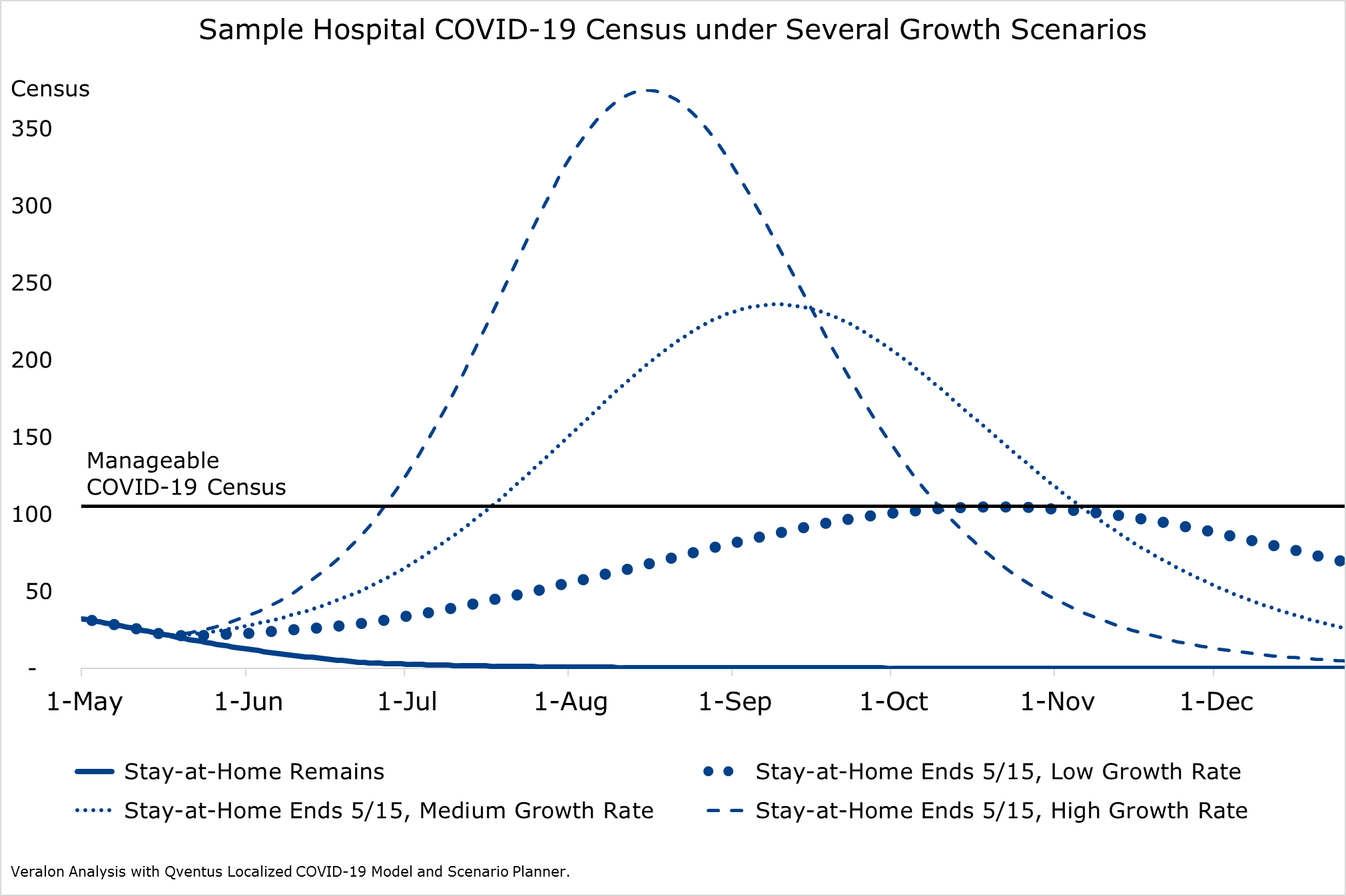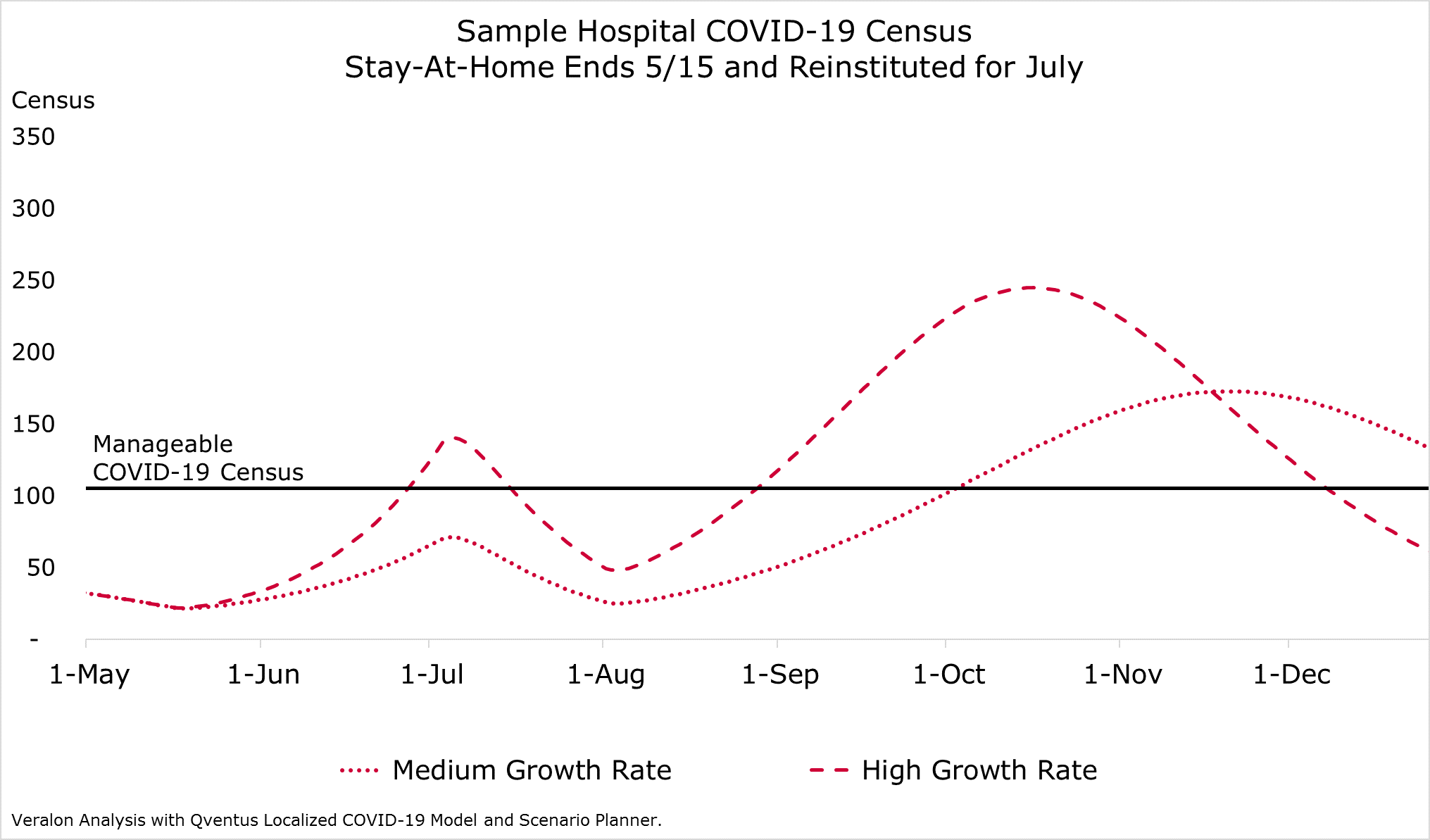COVID-19: Is This The Peak, or Just A Peak?
What COVID-19 volume should hospitals expect over the next 6 to 12 months?
In the last two months, some hospitals experienced exponential COVID-19 census growth, while others stared at empty hallways as stay-at-home orders flattened the growth before it took off.
Doubling of cases occurred as quickly as every 3-5 days before states exercised any precautions, and as slowly as every 15-30 days or more under stay-at-home orders. When stay-at-home orders are lifted, the doubling rate will likely land somewhere between 3 and 30 days.
All of the decisions about social distancing, reopening schools and businesses, cleaning protocols, test/trace, and whether to quarantine people with positive tests, as well as population density and the impact of warmer weather – they all contribute to the doubling rate. And it’s likely to vary by locality.
While treatment advances may reduce length of stay (e.g., Remdesivir), hospitals will need to adjust quickly at the first sign of future exponential COVID-19 census growth, while maintaining care availability for other patients.
Case Study
Let’s imagine a 200-bed suburban community hospital at which the COVID-19 census reached 50 and is declining.
If stay-at-home remains in place (solid line), COVID-19 census is projected to decline to near zero and remain there.
However, if the stay-at-home orders are lifted on May 15, when the hospital is expected to have a census of 20 COVID-19 inpatients, the case count would likely begin to rise again.
Figure 1 contains runs from a COVID-19 scenario planning tool publicly available from Qventus. Each line represents a different degree of success in limiting the infection spread after stay-at-home is ended, yielding low, medium, or high census growth thereafter.
Figure 1
As illustrated in Figure 1, for this hospital a low growth rate is estimated to flatten the curve sufficiently to keep the census at or below 100 COVID-19 inpatients. In the medium and high growth rate scenarios, hospital census peaks above a manageable level.
If a second stay-at-home order is instituted for the month of July under the medium and high growth rate scenarios (Figure 2), census can be reduced closer to a manageable level.
Figure 2
However, census would begin to increase again when restrictions are lifted at the end of July, and a third stay-at-home order (not illustrated) might be needed for September or October. This is the dreaded “wave” scenario.
Implications
COVID-19 census will not disappear after this first peak.
The nature of exponential growth will make it difficult for states to find an equilibrium with a manageable level of COVID-19 cases.
As stay-at-home orders are lifted, infections are likely to increase at a rate that would, if unchecked, overwhelm hospital capacity in many areas. States would need to consider re-imposing some form of stay-at-home orders if they cannot slow the spread sufficiently through masks, physical distancing, test/trace, and other measures.
As a result, hospitals may experience a series of COVID-19 peaks, mitigated through intermittent tighter restrictions, as states or local governments seek to balance the health and economic impacts of COVID-19.
Therefore, Hospitals will need to care for an ongoing and varying flow of COVID-19 patients while still treating patients with other health needs.
Contact the authors:
John Harris, Director, jharris@veralon.com
Molly Johnson, Manager, mjohnson@veralon.com
____________________________
Thanks to the team at Qventus who developed the Localized COVID-19 Model and Scenario Planner we have used for these scenarios. The model is available for free at https://qventus.com/covid-19-model/.
Veralon is pleased to support hospitals and health systems with free assistance to create utilization scenarios or interpret output from multiple models. Contact us at info@veralon.com.

